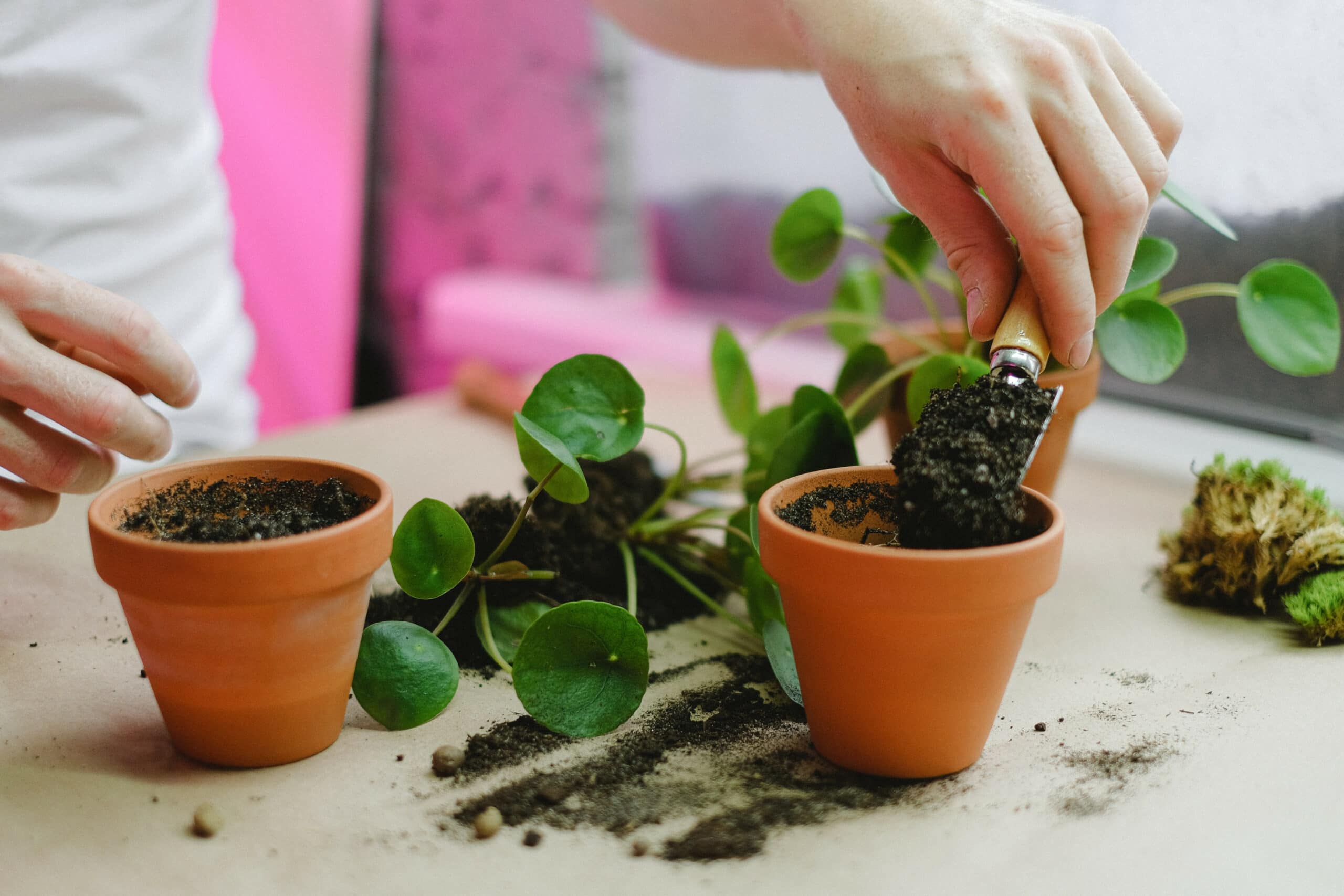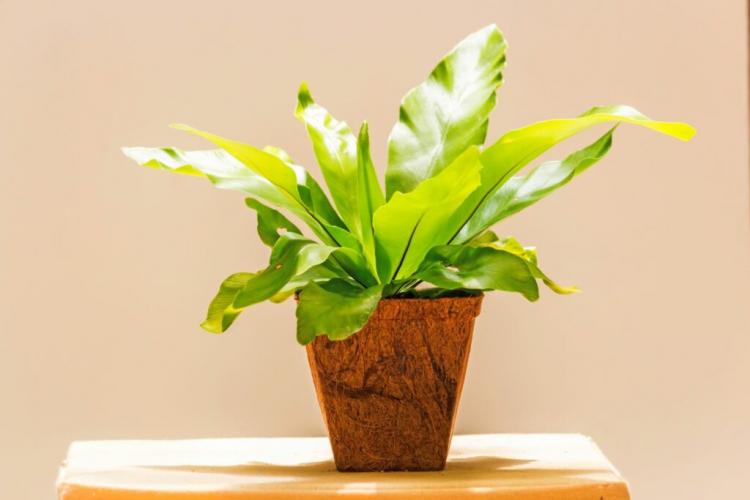Can Snake Plants Live Outside
 Snake plants, also known as mother-in-law’s tongue or sansevieria, are popular houseplants known for their tough, resilient nature and attractive, upright leaves. These plants are native to West Africa and are often found in hot, dry environments.
Snake plants, also known as mother-in-law’s tongue or sansevieria, are popular houseplants known for their tough, resilient nature and attractive, upright leaves. These plants are native to West Africa and are often found in hot, dry environments.
While they are generally easy to care for, many people wonder whether they can be kept outside, particularly during the winter. In this article, we’ll explore whether snake plants can live outside and provide tips for caring for them in an outdoor setting.
Can snake plants live outside in winter?
Table of Contents

It’s a common question among snake plant owners: can these hardy plants survive the cold winter months outside?
The short answer is yes; snake plants can survive short periods of cold weather down to around 20 degrees Fahrenheit.
However, snake plants are not frost-tolerant and should not be left outside too long in cold temperatures.
While they can tolerate short periods of cold weather down to about 20 degrees Fahrenheit, they are not adapted to living outside all year and will not survive extended periods of freezing temperatures.
This being said, if you live in an area with warmer temperatures in winter, you may be able to keep your snake plant outside as long as it is protected from frost and freezing temperatures.
To prepare your snake plant for winter, it’s a good idea to gradually acclimate it to the colder temperatures by moving the plant to a slightly cooler location a few weeks before the frost is expected. This will allow the plant to adjust to changing conditions and reduce the risk of shock or damage. It’s also a good idea to cover your snake plant with a frost blanket or other protective covering if you know that frost is imminent.
You Might Also Like Does Snake Plant Attract Bugs
In addition to protecting your snake plant from frost, it’s essential to consider the overall care and maintenance of the plant during the winter months.
Snake plants need bright, indirect light to thrive, so be sure to place them in a location with plenty of sunlight. However, avoid exposing your plants to direct sunlight, which could damage them.
If you live in an area with particularly dry air during the winter, it’s a good idea to use a humidifier to increase the humidity around your snake plant. Snake plants prefer a humidity level of around 40-60%, so a humidifier can help to keep the air around the plant at the right level.
In addition to providing the proper humidity, it’s important to protect your snake plant from strong winds, which can cause the leaves to dry out and become damaged.
There are several ways to protect your snake plant from strong winds:
Choose a sheltered location
One of the simplest ways to protect your snake plant from strong winds is to choose a sheltered location. This could be a porch, sunroom, or another protected area that provides some protection from the elements.
Use windbreaks
If you cannot avoid exposing your snake plant to strong winds, you can use windbreaks to help protect it. Windbreaks can be physical barriers, such as fences or walls, or natural barriers, such as trees or shrubs.
Plant in a container
Planting your snake plant in a container can also help to protect it from strong winds. Containers are more portable than plants in the ground, so you can move your plant to a sheltered location if necessary.
Use stakes or supports
If your snake plant is tall or top-heavy, you may need to use stakes or supports to keep it upright in strong winds. Make sure to use sturdy stakes or supports that are appropriate for the size and weight of your plant.
Mulch around the base of the plant
Mulch can help to anchor your snake plant in place and provide some protection from strong winds. Just be sure to use a mulch that is well-draining, as snake plants do not tolerate wet or waterlogged soil.
You Might also like How Often to Water Pilea Plants
What temperature can a snake plant tolerate?
Snake plants are generally considered tolerant of a wide range of temperatures as long as they are not exposed to freezing temperatures for an extended period.
Snake plants tolerate temperatures between 55 and 90 degrees Fahrenheit.
They may experience some stress or damage if exposed to temperatures outside this range, but they are usually quite resilient and may recover if the conditions improve.
It’s worth noting that snake plants can suffer from sudden temperature changes, especially if they are moved from a warm indoor environment to a colder outdoor environment.
Regarding temperature, it is essential to remember that snake plants are tropical plants and prefer warm temperatures and humid conditions. They will do well in a location with plenty of indirect sunlight.
If you live in a particularly hot climate, it’s a good idea to provide shade for your snake plant to protect it from direct sun, which can cause the leaves to become scorched.
Although snake plants can withstand dry conditions, it is essential to water them consistently to maintain their health. Yes, even drought-tolerant plants need frequent watering.
If you live in a colder climate, you may need to provide additional heat and humidity. As mentioned above, snake plants should not be left outside in too-cold temperatures.
How do you take care of an outdoor snake plant?
Caring for a snake plant outdoors is similar to caring for an indoor snake plant, with a few key differences. Here are some tips for taking care of your snake plant outdoors:

Choose the right location
Snake plants need plenty of sunlight to thrive, so be sure to choose a location that gets plenty of light but is protected from strong winds.
Avoid placing your snake plant in an area that gets direct sunlight for extended periods, as this can cause the leaves to become scorched. Snake plants can still tolerate one or two hours of direct sunlight exposure, but it is not recommended.
If you live in a particularly hot climate, it may be necessary to provide partial shade for your snake plant to protect it from direct sunlight.
However, when it comes to shady areas, snake plants may still struggle to thrive if they do not receive enough light. While they can survive in low light conditions, they may not grow as vigorously and may become leggy or weak.
If you decide to place a snake plant in a shady area, it is important to monitor it closely and ensure it is getting enough light and is not overwatered. With proper care, it is possible to grow a healthy snake plant in a shady area.
You Might Also Like: Plants That Do Not Like Mushroom Compost
Hydrate Your Plants: The Importance of Adding Water
Watering a snake plant is essential to its health and growth. These plants prefer soil that is evenly moist but not waterlogged. Overwatering can lead to root rot, which can kill the plant. On the other hand, under-watering can cause the leaves to become wilted and yellow.
It’s essential to regularly check the soil moisture level and water the plant when the soil has completely dried up.
The watering frequency will depend on the temperature and humidity in your home, the size of the pot, and the type of soil you are using.

Pot size
Snake plants can grow quite large, so it’s crucial to plant snake plants in a large pot to accommodate the plant’s root system. A pot that is too small can cause the plant to become root-bound and may result in poor growth.
If you’re growing snake plants outdoors, be sure to choose a large pot to allow for proper drainage and withstand the elements.
Re-potting
Snake plants are relatively slow-growing and don’t need to be re-potted very often. However, if you notice that your plant is outgrowing its pot or the soil has become depleted, it may be time to re-pot.
To re-pot your snake plant, choose a larger pot and fill it with well-draining soil. Carefully remove the plant from its existing pot and gently shake off any excess soil. Place the plant in the new pot, and fill in around the roots with soil. Water the plant well after re-potting to help it settle into its new home.

Pruning
Snake plants can benefit from pruning to remove dead or damaged leaves and encourage new growth. To prune your snake plant, use a clean, sharp pair of scissors or pruning shears and cut off any yellow, brown, or wilted leaves at the base of the plant. Be sure to wear gloves to protect your hands from the sharp edges of the leaves.
Propagation
If you’re looking to grow more snake plants, you can quickly propagate them by dividing the offsets (tiny plants that grow from the base of the mother plant) or by rooting leaf cuttings.
To propagate snake plants by dividing offsets, gently remove the offsets from the mother plant, being careful not to damage the roots. Place the offsets in individual pots filled with well-draining soil, and water them well. Keep the offsets in a bright location, and water them regularly.
To propagate snake plants by rooting leaf cuttings:
- Cut off a healthy leaf from the mother plant using a clean, sharp pair of scissors or pruning shears.
- Place the leaf in a well-draining soil mix, and water it well.
- Keep the soil moist but not soggy, and place the pot in a bright, indirect light location.
The leaf-cutting may take several weeks or even months to root and form a new plant. Be patient, and don’t be discouraged if it takes a while – it’s worth the wait!
Pests
Despite their hardy nature, snake plants can still be prone to pests such as mealybugs, scales, and aphids. These pests can cause damage to the plant by sucking the sap from the leaves, leading to yellowing and wilting.
Here are some tips for controlling pests on snake plants outdoors:
- Inspect your plant regularly: Keep an eye out for any signs of pests, such as small insects or sticky residue on the leaves. Regular inspections will allow you to catch any infestations early on, which makes them easier to control. If you notice any pests on your snake plant, it’s important to address them immediately to prevent further damage.
- Isolate infested plants: If you notice pests on one of your snake plants, it’s a good idea to isolate it from your other plants to prevent the pests from spreading. This will also make it easier to treat the infested plant without affecting your other plants.
- To control pests on your snake plant outdoors, you can use a mixture of water, mild soap, or a horticultural oil spray to kill the pests.
- Use natural predators such as ladybugs or green lacewings to control pests on your snake plant.
- Use physical removal methods: If you have a small infestation, you may be able to remove the pests manually by handpicking them off the plant and disposing of them. You can also try using a soft brush or cotton swab to remove smaller pests.
- Use an appropriate pest control product: Neem oil is generally considered non-toxic to humans and pets and can be used as a natural pesticide to control pest infestation in snake plants.
- Practice good hygiene: Keep your plants clean and free of debris, which can help prevent pests from taking hold. Wipe the leaves with a damp cloth regularly and dispose of any fallen leaves or flowers to keep your plants healthy and pest-free.
Overall, the key to controlling pests on snake plants outdoors is to be proactive and address any infestations as soon as you notice them. They are still one of the easiest plants to maintain, and with a little attention and care, you can keep your snake plants healthy and thriving.
You Might Also Like : Can You Propagate Pothos without Nodes
Fertilization
Fertilization can help provide your snake plant with the nutrients it needs to grow and thrive. While these plants are generally low-maintenance and don’t require frequent fertilization, they can still benefit from an occasional boost. The best time to fertilize your snake plant is during the growing season, which is typically from spring to fall.
To fertilize your snake plant, use a balanced, all-purpose fertilizer and follow the instructions on the label for the proper amount to use. Be sure to water the plant well after fertilizing to help the nutrients reach the roots.
It’s important to note that it’s possible to over-fertilize your snake plant, so be sure not to use more fertilizer than is recommended. Too much fertilizer can actually harm the plant by overwhelming it with excess nutrients.
You May Also Like: Is Neem Oil Safe for Cats?
Are snake plants better inside or outside?
Snake plants can thrive both indoors and outdoors, depending on the specific conditions they are given. Here are several factors to consider when deciding whether to keep your snake plant inside or outside:

Light
Snake plants need bright light to thrive. If you live in an area with bright, sunny days, your snake plant will likely do well outside in a location that receives plenty of sunlight (while avoiding direct sunlight).
On the other hand, if you live in an area with lower light levels, keeping your snake plant inside near a window with plenty of sunlight may be necessary.

Temperature
Snake plants generally tolerate a wide range of temperatures, from 55 to 90 degrees Fahrenheit. However, they are not frost-tolerant and should not be left outside in freezing temperatures.
If you live in a cold area, keeping your snake plant indoors is best to protect it from low temperatures.
Soil
Snake plants prefer well-draining soil that is rich in organic matter. If you’re keeping your snake plant outside, it is recommended to use a potting mix specifically formulated for succulents and cacti, as this type of soil is well-suited to the needs of snake plants.
Choosing a pot with drainage holes is important to prevent excess water from accumulating and causing root rot.

Overall, the key factors to consider when deciding whether to keep a snake plant inside or outside are the availability of bright light, the temperature range, and the type of soil. As long as the plant is given these conditions, it can thrive outdoors and indoors.
In conclusion
Snake plants are a must-have for any plant lover looking for a tough and resilient plant that is easy to care for. These beautiful houseplants are not only attractive, but they also thrive in various conditions, making them a versatile and low-maintenance addition to any home or outdoor space.
Whether you are a beginner or an experienced plant enthusiast, a snake plant is an excellent choice for those looking to add a touch of greenery to their home.
So why wait? Add some snake plants to your collection today, and enjoy the benefits of having these hardy plants in your home!





